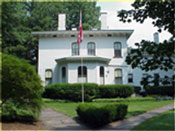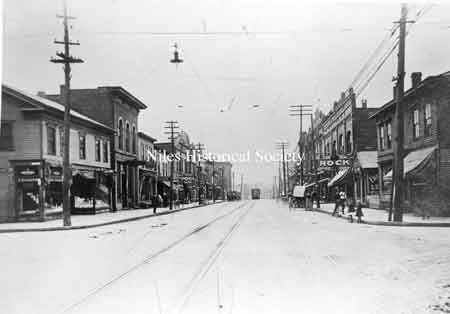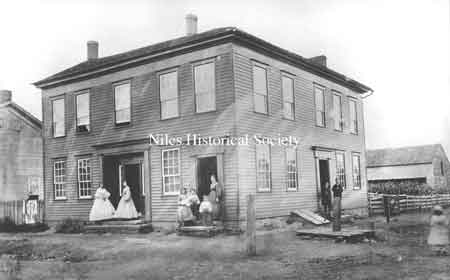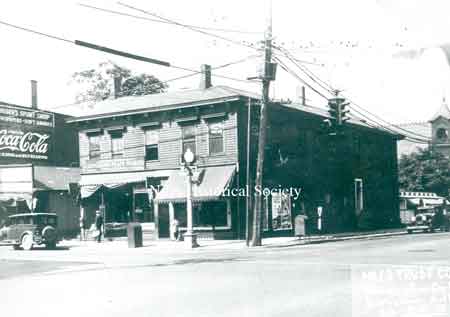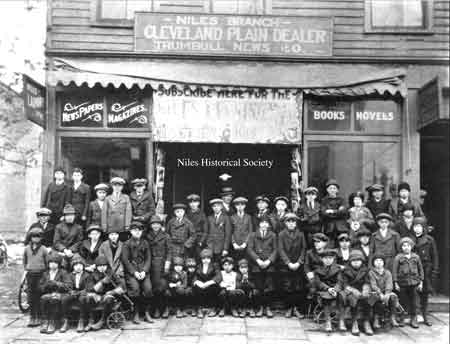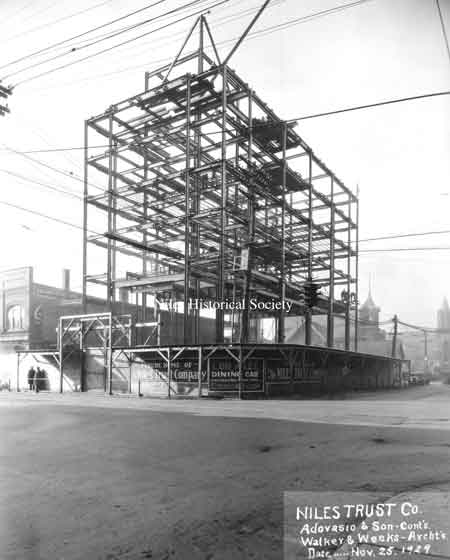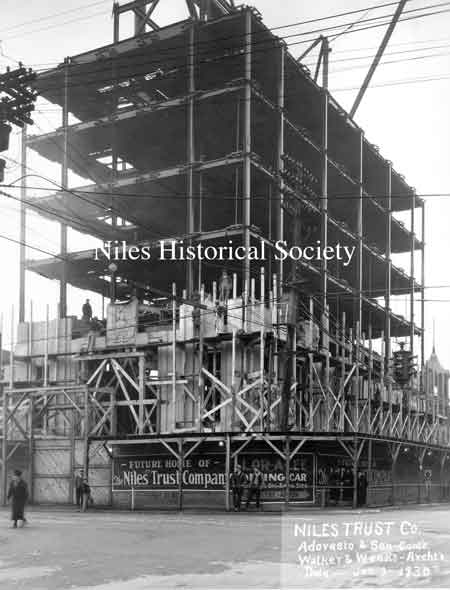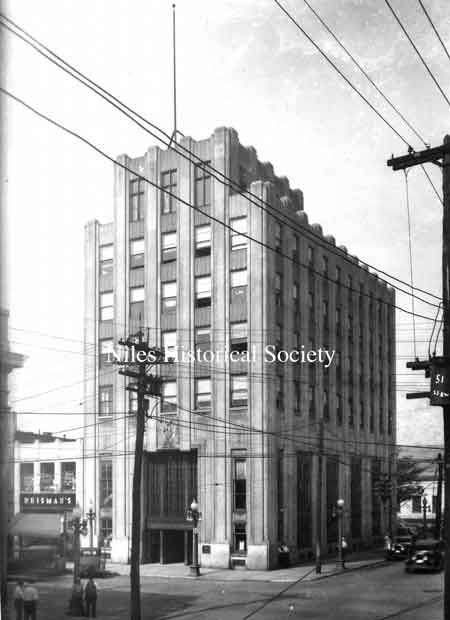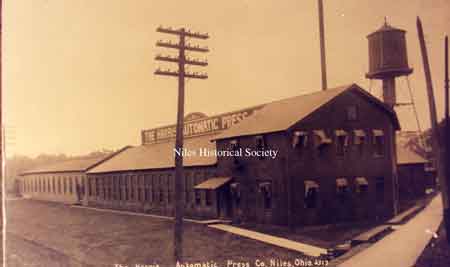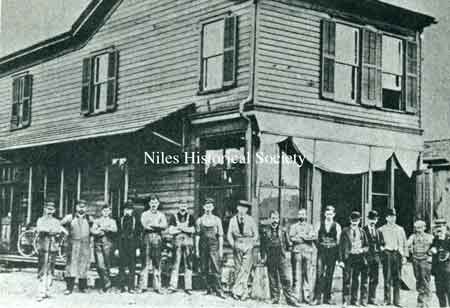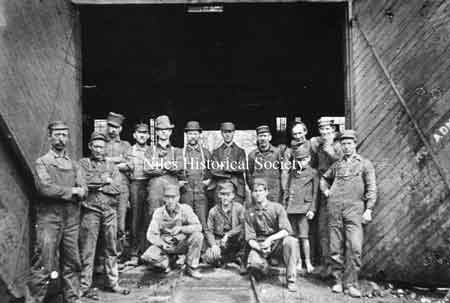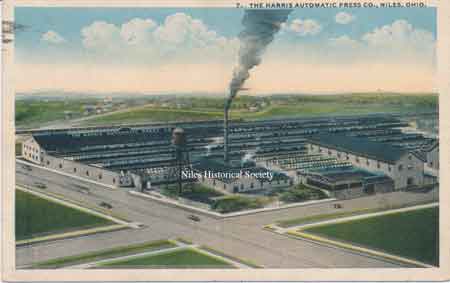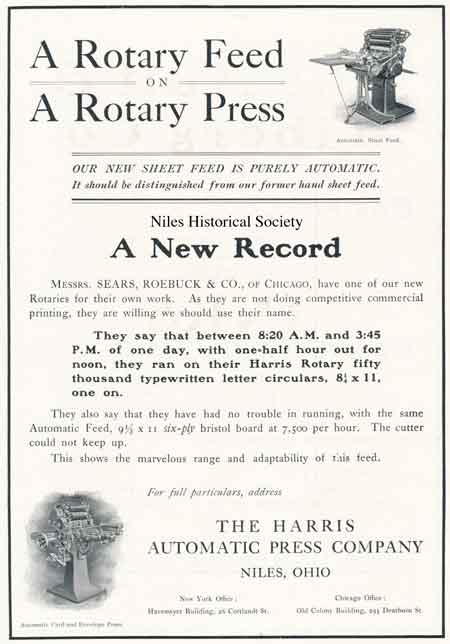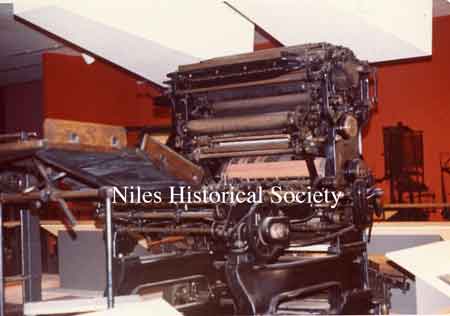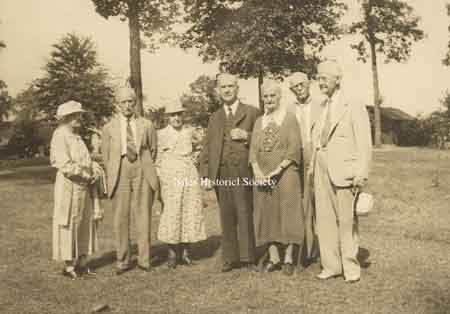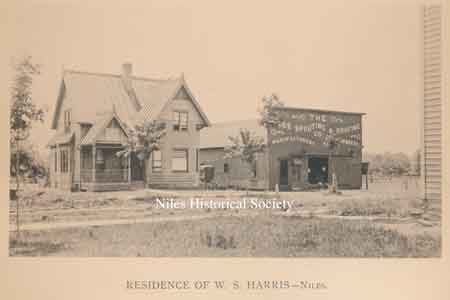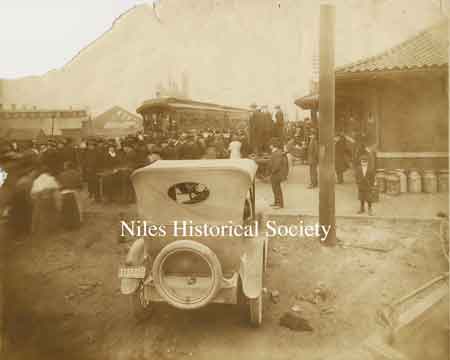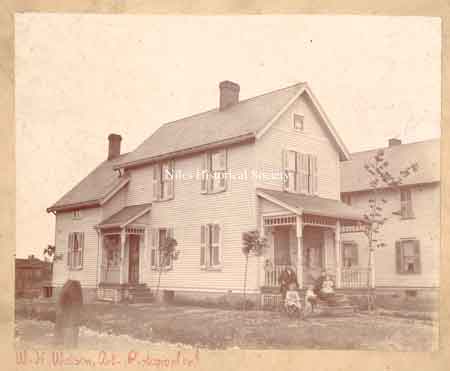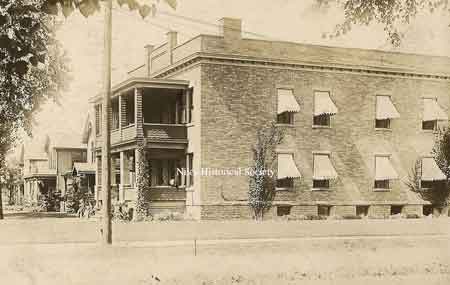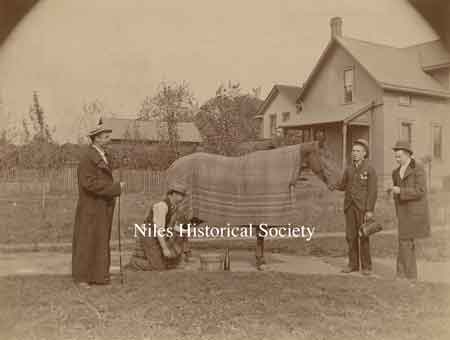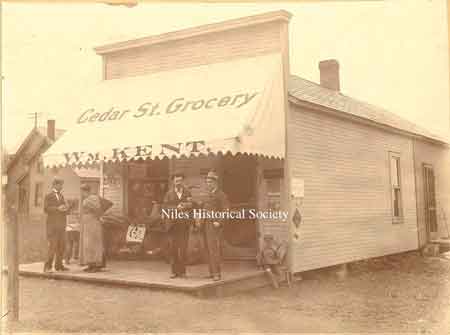|
A Glimpse at the Harris
Brothers and their Press.
In 1976 the predecessor of Harris
Automatic Press Co. of Niles, Ohio, Harris Intertype Co. of Cleveland,
Ohio, donated the first automatic feeding press designed and built
in 1896 by Charles and Alfred Harris to the
Graphic Arts Gallery of the Smithsonian Institution in Washington,
D.C. Most Nilesites have heard about Alfred and Charles Harris
and their invention of the first offset printing press; but the
story, as written by a family member, recently surfaced.
In 1931 A.F. Harris, son
of Alfred F. Harris, then president of Harris Seybold-Potter
Co. of Cleveland, wrote a story for Graphic Arts, a monthly magazine,
which I’d like to quote:
“ Many people recently by
reason of the fact that this is the twenty-fifth anniversary of
the building of the first commercially successful offset printing
press, have asked me to tell them the story of the discovery of
the offset by my father, A.F. Harris, and his brother, Chas.
G. Harris."
"In 1870 when father was eleven years old, his first job
was in a shoe store in Niles, Ohio. Back of the shoe store was
a work shop equipped with tools which exercised a strange fascination
upon him . When four years later his brother Charles came into
the store, the two boys began in earnest to experiment in making
things in their spare time. They next worked for Thad Ackley,
a jeweler in Warren, Ohio, who possessed an experimental turn
of mind and encouraged their mechanical ingenuity”.
“Father then became a watch
inspector for a railway company. During this time he worked with
Charles on developing s twenty-four hour clock. Next they made
a nail feeder. In 1889 they became Niles’ only jeweler,
but the business was too small to take the full time of both of
them. Consequently, they had ample opportunity for research and
invention, The jewelry store had a back room, which they quickly
converted into a work shop.”
“One day Charles Harris watched
the installation of a new platen press in the shop of a local
printer named Smith. Smith was very proud of his new press. Charles
remarked that it was fed by hand, Smith, quick to defend his press,
challenged Charles to perfect an automatic feeder.”
“Shortly after this, a wagon
drove up before the jewelry store with a device that looked like
a clothes wringer. When father saw this unloaded, he protested,
saying that it was certainly not his."”
The driver, however, insisted on
leaving it. Later Charles came into the shop, and rather sheepishly
told of his talk with Smith some time before, and said that he
had built an automatic feeder. The two brothers laughed heartily
“at the joke on Smith”.”
“One day while Charles was
out, father had an inspiration, and with a yardstick, a saw blade,
and a rubber blanket, made a contrivance that completed the invention.
Soon sheets were running through at 15,000 per hour.”
“Their first press was a wooden
model. During the winter of 1890 they built an iron model in the
machine shop of a friend, who was located close to the jewelry
store. Whenever some part of the equipment in the machine shop
was not busy, the brothers were permitted to use it. The two worked
busily. In the summer of 1892 Charles, and later Father, went
to see the printing exhibits at the World’s Fair in Chicago.
Examination of the equipment there convinced them that they were
far ahead of anything so far developed; so they decided to go
into business.”
“Their first press of the
new company, which was incorporated in 1895, proved a failure,
and so they started all over again. In 1896 another machine was
completed. When it was offered for sale, no one believed the story
they told–the speed was so much greater than any press had
ever been able to run. When they offered it to the next man, they
made more modest claims with the result that they sold it.”
“Their first job was postcards.
They ran 12,500 postcards in fifty minutes. An all-tine record
up to then. Their second job was an envelope one, and this required
four months in order to perfect the machine so that it would feed
them. But, at last the difficulty was solved and the press accepted.
Press then followed press, in quick succession.”
“One day while erecting one
of their new automatic presses in a Cleveland plant, father heard
a pressman become very indignant at one of his operators. The
girl had neglected to trip the press when failing to feed a sheet.
The result was an impression on the rubber blanket. The next sheet
through was offset in reverse. Father and the pressman examined
the sheet closely and were particularly interested in the sharp
clear reproduction. Finally the pressman turned to him and said,
'If we could only print like that!' ”
“The result was that Father
and his brother set to work to make it possible to print like
that. First, they built a press with a plate cylinder, impression
cylinder, and two offset cylinders.This press proved that offset
printing was possible; but there were a good many things to learn
about it. Experiment followed experiment until finally the first
successful offset press was a reality. Each succeeding press has
been an improvement.”
“During the twenty-five years
since the installation of the first commercially successful offset
press in Pittsburgh, the offset process has come to play an ever-increasing
part in the graphic arts, The printers of America contributed
immeasurable to putting the offset process over."
The late Clifton A. Bostwick, who at one time resided
at 136 Salt Springs Road, Niles, worked for Harris Automatic as
an erector and trouble shooter in 1912. At that time Harris Automatic
Press Co. sold a press to Kline, Linderman and Bauer on New York
City and Bostwick was sent to setup the new press before a designated
deadline.
The press was shipped to Hoboken,
New Jersey and ferried across to New York City on the day the
longshoremen went on a one-day strike. The next day the longshoremen
unloaded the press, but that day the riggers went on strike and
another day of the delivery schedule was lost.
The press was finally delivered to a passenger elevator at Kline,
Linderman and Bauer Co. on Pearl St., near Wall St., in New York
City, where the elevator operator refused to transport it to the
17th floor destination.
After two days of coaxing, with
a bribe to make things legal, the elevator operator relented and
the delivery men and Bostwick proceeded to load the press on the
elevator. To erect the press, they had to use a 12-foot long I-beam.
The only way to get the I-beam to the 17th floor was to drop the
elevator to the basement and then tie the I-beam to the elevator
cable. Guess who rode on top of the elevator to steady the I-beam?
Well it wasn't one of the delivery boys. It was Clifton Bostwick!
There were also several crates of
press parts, but one crate in particular created a real problem.
The crate was larger than the elevator but smaller than the elevator
shaft. So, the delivery men ran wooden timbers across the elevator
shaft. Then, after moving the elevator up ten feet, they rolled
the crate onto the timbers; and, after dropping the elevator down,
used large ropes to secure the crate to the bottom of the elevator.
Then they took the crate up to the 17th floor.
The accomplishments of Charles and
Alfred Harris and the inequity of Clifton Bostwick are excellent
examples of Nilesites and their spirit Where there's a will, there's
a way!” |


